Churn is a growth and revenue killer but it’s not something that occurs when the customer is abandoning you.
It is a customer lifecycle problem, which should be tackled throughout your entire relationships with customers (and even before they start).
In this post, we are going straight to the battlefield and explore low-cost, actionable ways to combat churn and boost the growth of your SaaS business.
Download our Free Resource –Improving Audience Engagement and Retention
Lifecycle Marketing Automation and Email marketing strategies to increase audience engagement.
Access the Improving Audience Engagement and Retention
1. Optimize your targeting
If you’re acquiring new customers at a fast pace but aren’t keeping them in the long run, your offer may not be the right solution for the people you’re targeting.
Focus most of your marketing campaigns on your ideal customers - people who apriori look for the benefits that your product is able to give them.
Study your target market and define your customer persona.
- Who is your software intended for? For what types of businesses?
- What tasks can users complete by using it?
- Where can you find these people?
Also, don’t capitalize on being “free” and “cheap” in your marketing campaigns because you risk drawing “freebies” collectors. Such customers are not looking for the value you provide and are the most likely to leave.
2. Entice people into a longer subscription
Offer a good bargain for the annual subscriptions as opposed to the monthly plans.
If people have committed to a longer contract, they are much more likely to get deeply familiar with the product or service, put it into everyday practice, and - if they like it - stick to it.
For example, Buzzsumo offers people to save 20% on yearly subscriptions.
These are their monthly plans:
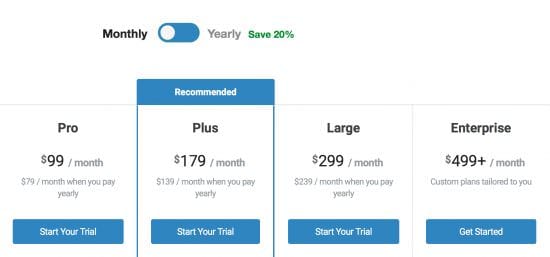
And these are billed yearly. Encouraging, eh?
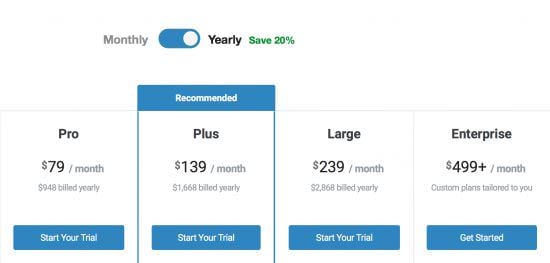
3. Personalize your onboarding emails
Segment your users and personalize every message you send them. Employ action-based email campaigns, which take into consideration not only the users’ current time on the trial but their interactions with your product.
This way, different people will receive different messages tailored to their current needs (for example, depending on whether they activated your software or not, are using it actively or are showing low activity, upgraded to a paid plan at the end of the trial or not etc).
An example of a post-trial email:
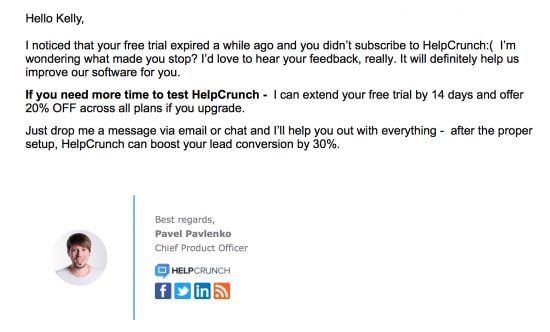
You can use standard email automation tools like MailChimp or AWeber or opt for all-in-one solutions that combine email automation with other communication tools like live chat and help desk (for example, Intercom, HelpCrunch, or Drift).
4. Optimize your customer service
Multiple studies indicate that poor customer service is the major cause of customer churn. For example:
A survey by Oracle showed that almost 80% leave a company move to a competitor because of bad customer service experience.
Customer service is a key player in improving retention. If you can’t differentiate between the product - you can differentiate either with the business model or with the superior service.
So what is a good customer service in 2018?
- Be swift, available 24h and multichannel. People should be able to reach you anywhere, anytime - via live chat, email, social media or instant messengers, on the web or via mobile.
- Be proactive. Don’t wait until the users contact you: proactively offer assistance, inquire about their specific requirements, expectations, and experience with using your product.
- Build relationships. Treat your customers like humans, not like success numbers: show empathy and personalize your approach to every client.
- Invite feedback, opinions, suggestions. Make customers feel important and their opinions count.
- Provide highly targeted tips, free training or even a personal assistant according to client’s specific business nature and needs
- Follow-up on every interaction. Go extra mile after the customer’s problem has been resolved. Get in touch after some time and inquire how things are going.
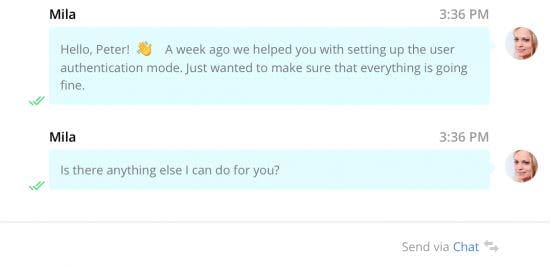
To cover all these requirements, use a good all-in-one customer service tool for managing all customer interactions in one place, like HelpCrunch or Intercom
You’ll be able to instantly answer all customer questions in the live chat, trigger automated proactive chat messages when they are most likely to need help, organize all your multichannel communication in one dashboard, automate your emailing, collect feedback and analyze your teams’ performance.
5. Build useful resources for your customers
The customers that are using your software on the regular basis most likely won’t abandon you.
Teach them about the functionality of your products, provide content that answers their questions and concerns. This could be:
- Comprehensive FAQ section or knowledge base - available only for the paying customers
- Videos instructions and tutorials, webinars, ebooks, whitepapers, case studies, etc.
- Company blog addressing customers’ pain points
- Emails with “Pro Tips” to paying customers.
- How-to tips, quick guides, link to any useful resources for high-risk customers
- A training center or even a YouTube channel
- A set of high-value personalized educational materials available only to subscribed customers. This will be yet another reason for them to keep the subscription.
A good and trendy idea is to apply gamification elements to make using or learning about your product fun. Have a look how Salesforce does it.
6. Show appreciation in a personalized way
Personalized thank-you or “you’re awesome” emails. People will feel even more valued if they receive a personal email from the company’s CEO expressing gratitude for staying with the brand.
Upgrade subscribers that are doing well automatically. Surprise your most active customers by upgrading their membership, at no charge, to a higher plan to let them get even more bang from your software.
That won’t cost you much but makes an unforgettable impression and skyrockets the probability that such users won’t slip away.
Incentives like coupons, promo codes, special offers, tickets to an exclusive event or an upcoming conference.
An example from Feedly:
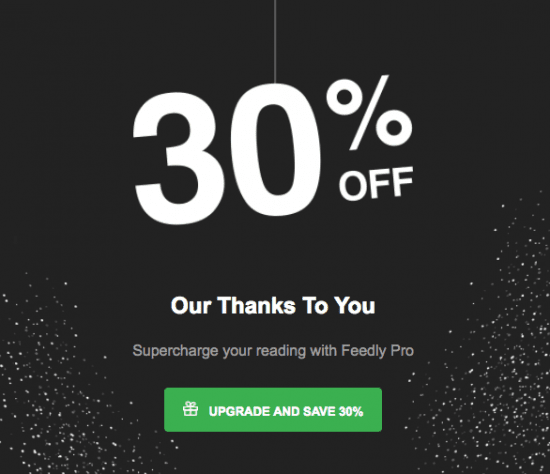
Acknowledge any social mentions. Every mention by your customers can spur a conversation and gives you an opportunity to strengthen your relationship. To track those mentions, you can use services like Mention or Awario.
By expressing the appreciation to your customers in different contexts, you immediately differentiate yourself from other brands that don’t show much interest in their customers’ success stories.
7. Identify at-risk users
Prevention is better than cure. Become aware of the signs that help you identify which customers are in danger of churning.
Look out for the following red-flag metrics indicating that a customer may not have the best experience with our product:
- low activity
- incomplete feature implementation
- poor customer’s results
- complaints
- irregular payments
- a low response rate
A reaction from Siftery
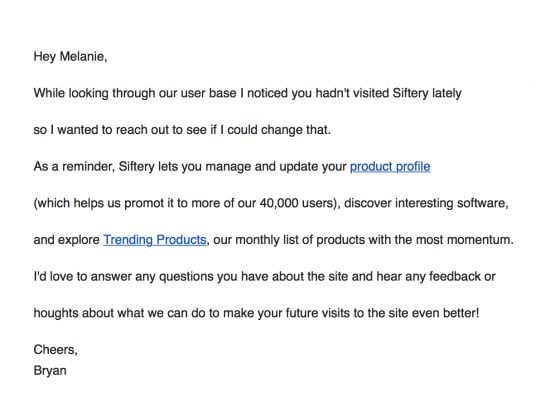
When a user has been identified with some of these indicators, contact him/her personally (ideally jump on a call), find out what’s going on and fix it asap.Your solution will depend on the situation: from a discount to walking them through using your software.
8. Retain customers during the cancellation
Yes, you should not obstruct canceling the subscription to your software. But it doesn't imply just letting customers go:)
Permit customers to self-cancel but point out what they are losing. Show them the success data they've achieved with your product, e.g. customer data, sales data, etc.
Look how Grammarly wisely reminds users of their achievement
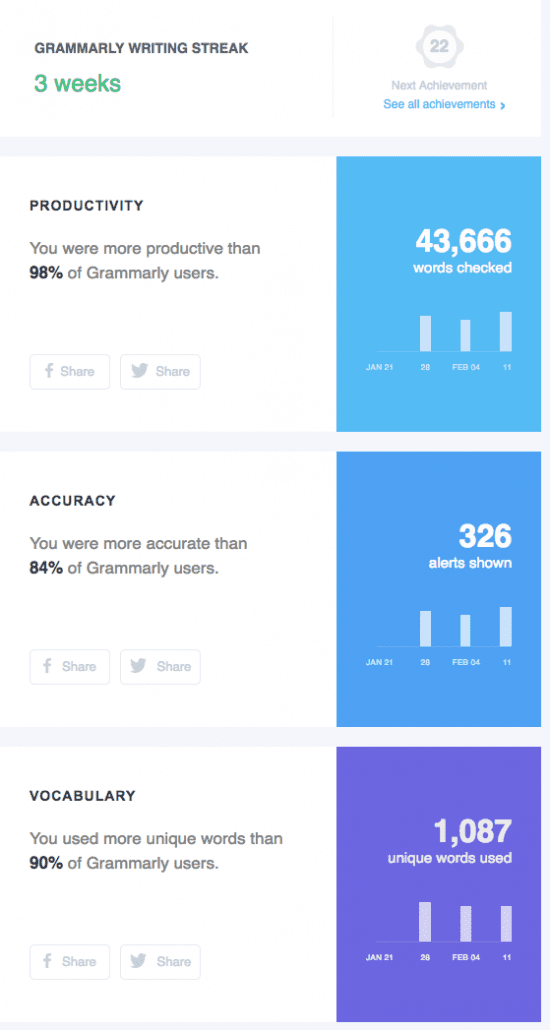
Ask what made them cancel, for example, through an exit survey. You can provide preset options (they are quicker and ensure a higher response rate) and/or include an open answer field too. Make it obligatory to fill in.
An example from Baremetrics
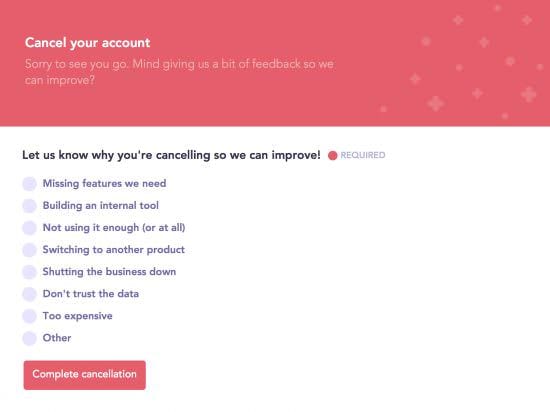
For example, if your software is too costly for them, give a possibility to downgrade to a lower level of subscription or even to a free plan because just keeping their account gives you a possibility to re-win them and persuade them into subscribing to a paid plan later.
As another alternative, you can put their plan on hold and postpone the payments for a couple of months.
If customers were not able to get good use of your product, offer a free consulting session that will allow them to get more power out of your software.
So, what practices are you applying to lower your customer churn rate? Have you tried the above techniques? We’ll be thrilled to hear about your experience!

Thanks to Liudmila Ganzha for sharing their advice and opinion in this post. Liudmila is a Content Creator at HelpCrunch. Her writing expertise spans across customer success, startups, SaaS tools, live chats, content marketing, e-commerce etc.



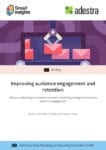








 Thanks to Liudmila Ganzha for sharing their advice and opinion in this post. Liudmila is a Content Creator at HelpCrunch. Her writing expertise spans across customer success, startups, SaaS tools, live chats, content marketing, e-commerce etc.
Thanks to Liudmila Ganzha for sharing their advice and opinion in this post. Liudmila is a Content Creator at HelpCrunch. Her writing expertise spans across customer success, startups, SaaS tools, live chats, content marketing, e-commerce etc.



